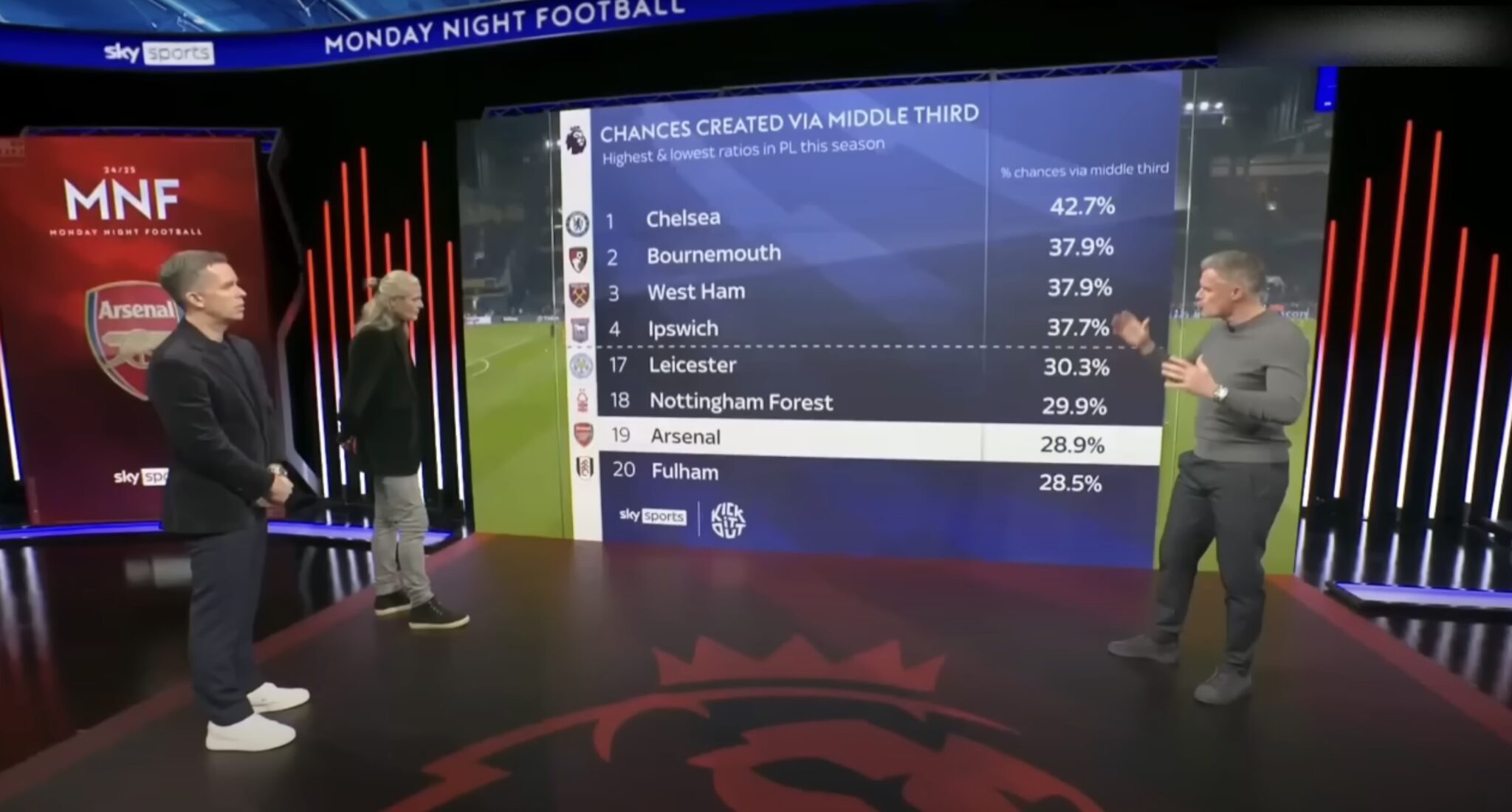Psst, I see dead people.
There were five goals for Arsenal on Sunday and then, a few hours later, five GRAMMYs for Kendrick Lamar, including Record of the Year, for his Drake diss-track ‘Not Like Us’. Kendrick was probably too busy to take note of events in north London, where his 2017 song Humble played the Arsenal players off the pitch and the Arsenal fans into the night after a cathartic 5-1 win over Manchester City.
Ultimately it was the ways City were (and are), well, Not Like Us, that determined the game.
This season’s drop-off from the champions has been characterised by a lack of legs in midfield and Arsenal were always going to be incredibly well suited to exploit just how much City have missed Rodri and the extent to which Father Time has come for the rest of their midfield.
The onus was on Arsenal, for once clear favourites in this fixture, to make the game happen, but for all City’s woes this season, they still have the world class individual quality to punish any team that doesn’t get things quite right. Arsenal suffered from the devastating threat of the long ball to Erling Haaland repeatedly in April 2022 and there was a convenient reminder supplied by Chelsea last week. Press by all means, but do not leave yourselves exposed to that again.
Arsenal pulled that off superbly with a press that involved the front five but left a ‘back five’ on the halfway line, man-marking City’s options to deny them an easy, long route forward. Individual quality was of course important here too: Arsenal have top class centre-halves who can compete with Haaland one-on-one and did not mind too much if City wanted to look for Matheus Nunes on the right flank.
The visitors often opted to play through the five-man Arsenal press rather than take their chances with the five-on-five the long ball out may have offered. One of the centre-backs stayed on Haaland, Thomas Partey dropped alongside the other to man-mark either Foden or Marmoush.
Without Ederson in goal, City were robbed of a world class ability to hit accurate long balls out from the back and were unusually predictable, with Mateo Kovacic splitting the centre-backs and the build-up receiving little help from the full-backs, nor Bernardo Silva.
The Arsenal press paid off within the first 100 seconds, with the Gunners cutting off all options through the middle and Leandro Trossard pouncing when John Stones looked for Manuel Akanji.
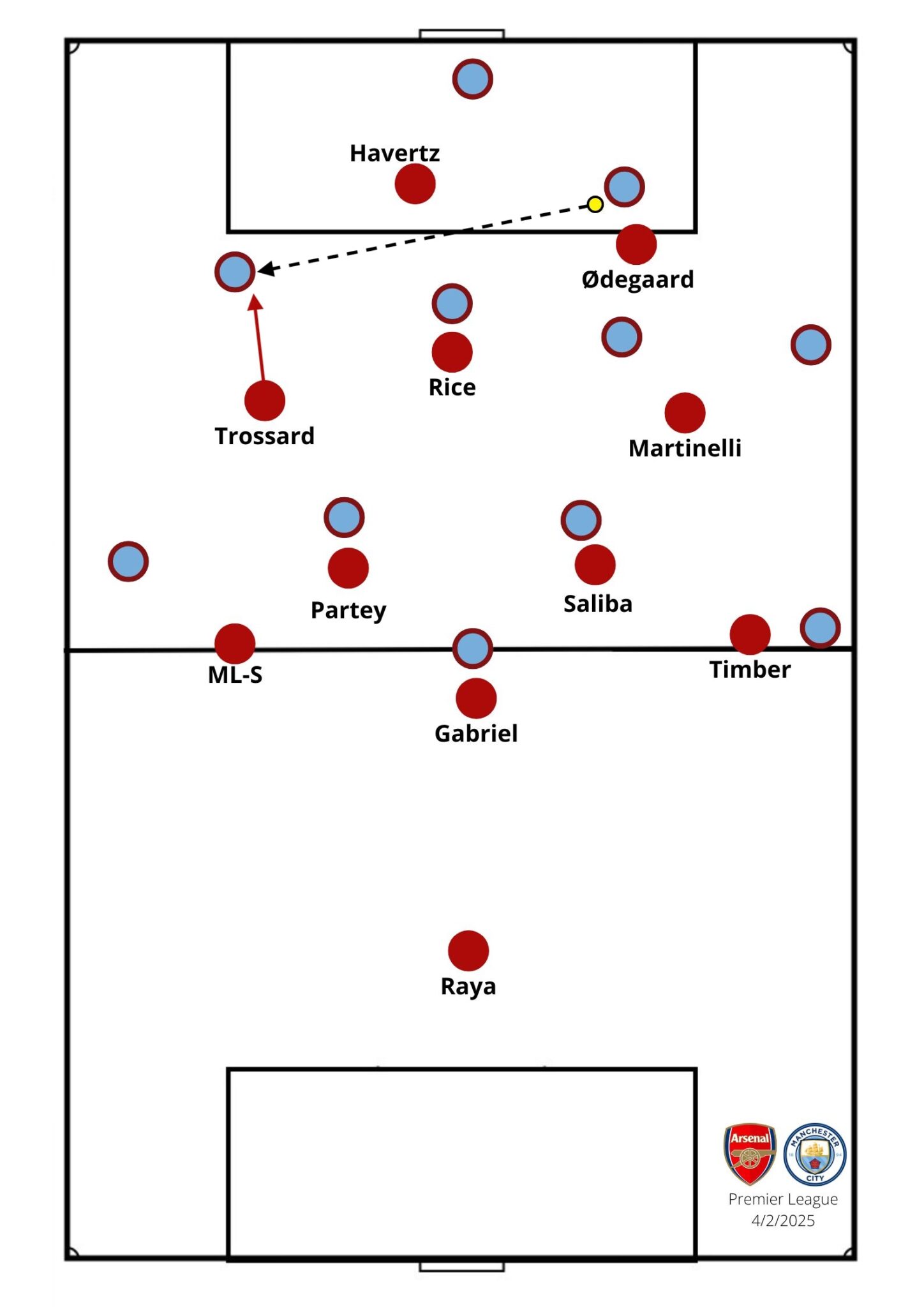 The press should have led to a second goal, too. Odegaard forced City all the way back from the halfway line and continued his run from Akanji to Ortega, cutting off a ball back to the Swiss. John Stones was not much of an option either, closely followed across goal by Kai Havertz, and Ortega opted not to go long as Arsenal again squeezed City with five men across the back.
The press should have led to a second goal, too. Odegaard forced City all the way back from the halfway line and continued his run from Akanji to Ortega, cutting off a ball back to the Swiss. John Stones was not much of an option either, closely followed across goal by Kai Havertz, and Ortega opted not to go long as Arsenal again squeezed City with five men across the back.
Instead the City goalkeeper played the risky ball into Kovacic, who was under pressure from perhaps the best ball-winning midfielder in the entire league and duly conceded possession. We know what happened next with Havertz in front of goal.
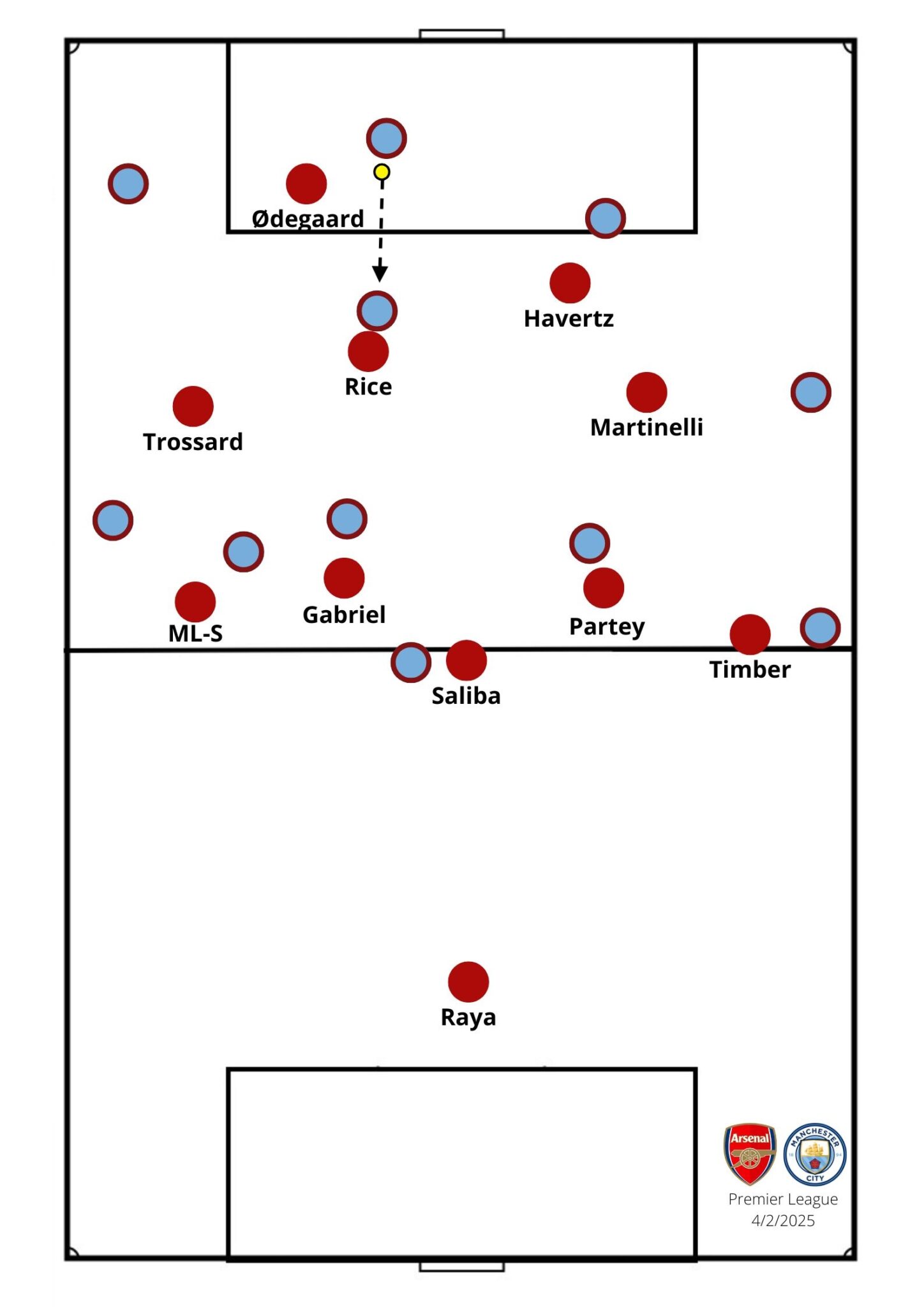 What was truly unusual, though, was seeing a Pep Guardiola team suddenly covered in these areas and doing nothing to rotate or add bodies in there so they could escape the pressure. It’s one thing that they don’t have the legs to compete but alone that should not cause so much harm to their build-up play and it was peculiar to see Bernardo Silva basically leave Kovacic to fend for himself. Time and time again the Croatian had no real midfield partner and City’s play out from the back became predictable, playing into Arsenal’s hands.
What was truly unusual, though, was seeing a Pep Guardiola team suddenly covered in these areas and doing nothing to rotate or add bodies in there so they could escape the pressure. It’s one thing that they don’t have the legs to compete but alone that should not cause so much harm to their build-up play and it was peculiar to see Bernardo Silva basically leave Kovacic to fend for himself. Time and time again the Croatian had no real midfield partner and City’s play out from the back became predictable, playing into Arsenal’s hands.
All of that was made possible because Arsenal, as well as sometimes taking up the option to go long, played with fluency and understanding, red and white shirts swirling around and swapping positions seamlessly. It was the positioning of the Arsenal skipper in particular that may have prompted some eyebrows to rise.
City’s predictable build-up helped the effectiveness of the Arsenal efforts to press and create dangerous situations. Arsenal’s unpredictable but perfectly played rotations had the opposite effect and the visitors couldn’t get close to winning the ball high up the pitch.
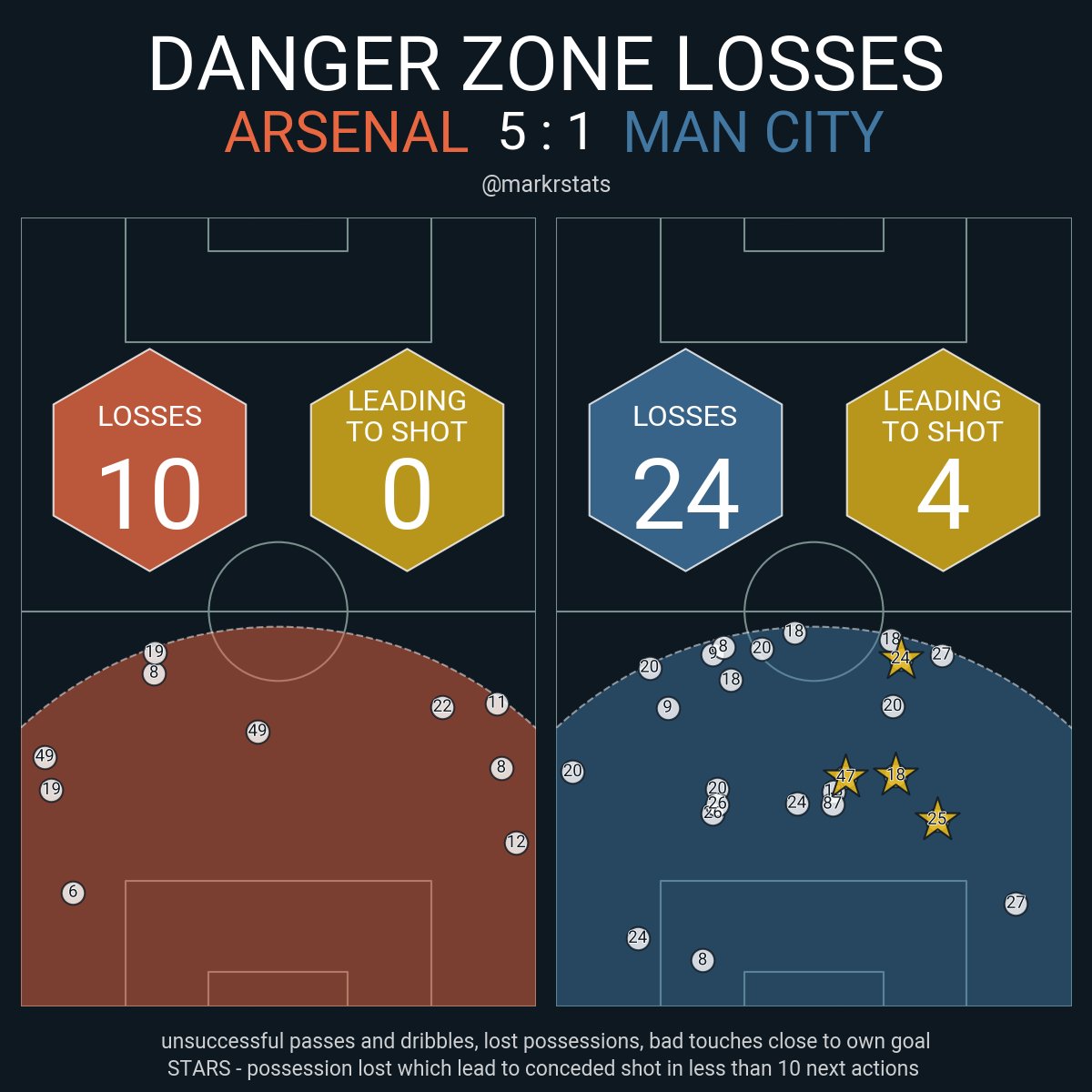 At the other end, playing out from the back, Arsenal were incredibly flexible. Where 61% of Ortega’s completed passes were to his starting centre-backs, Raya had options and found Partey with 34.6% of his completed passes, Havertz with 23%, while 30.8% of them found the Arsenal centre-halves. There were a couple of Martin Odegaard and Myles Lewis-Skelly along the way as well. Arsenal mixed things up in build-up, City couldn’t get near them. City were strangely static and obvious playing out from the back and Arsenal took advantage.
At the other end, playing out from the back, Arsenal were incredibly flexible. Where 61% of Ortega’s completed passes were to his starting centre-backs, Raya had options and found Partey with 34.6% of his completed passes, Havertz with 23%, while 30.8% of them found the Arsenal centre-halves. There were a couple of Martin Odegaard and Myles Lewis-Skelly along the way as well. Arsenal mixed things up in build-up, City couldn’t get near them. City were strangely static and obvious playing out from the back and Arsenal took advantage.
They Not Like Us.
City’s shape was predictable, Arsenal’s was fluid, especially with Odegaard dropping deep but also further forward, with Gabriel Martinelli and Jurrien Timber chopping and changing when it came to holding width on the right, and Leandro Trossard, Declan Rice and Myles Lewis-Skelly doing the same on the left.
Arsenal could man-mark City comfortably, the same opportunity was not offered to the champions, who were dragged around by the rotations and instead just ended up looking helpless and passive any time they looked like they might press.
We have become used to seeing Arsenal’s fullbacks tuck in — Timber (or White) on the right joining the centre-backs, the left-back joining midfield — but they tended to keep the width more often in this one. Odegaard would often drop to become the deepest midfielder, Trossard would drift inside to take up a more number 10-like position. The City press was constantly outnumbered, Arsenal players consistently found space and had a spare man.
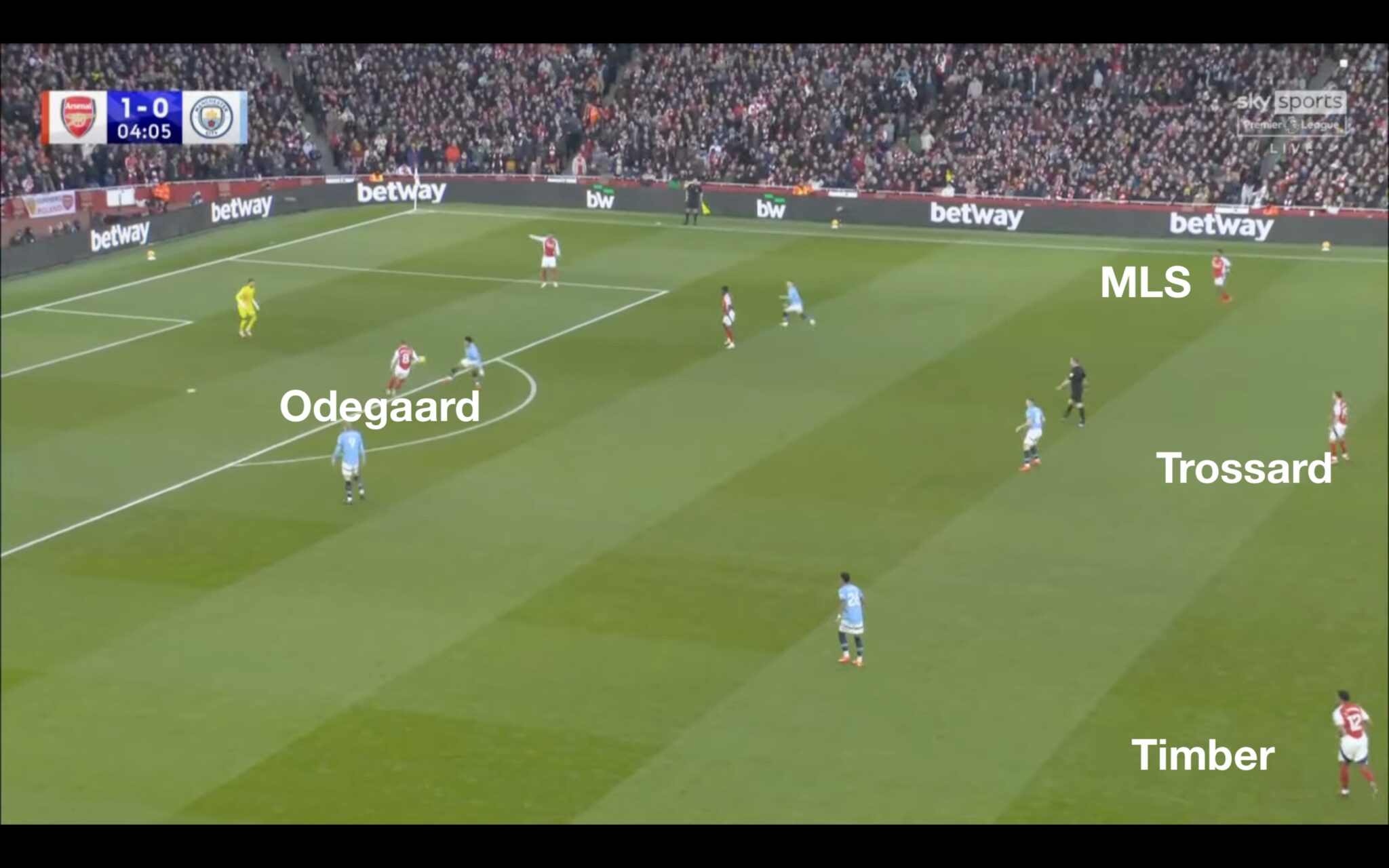
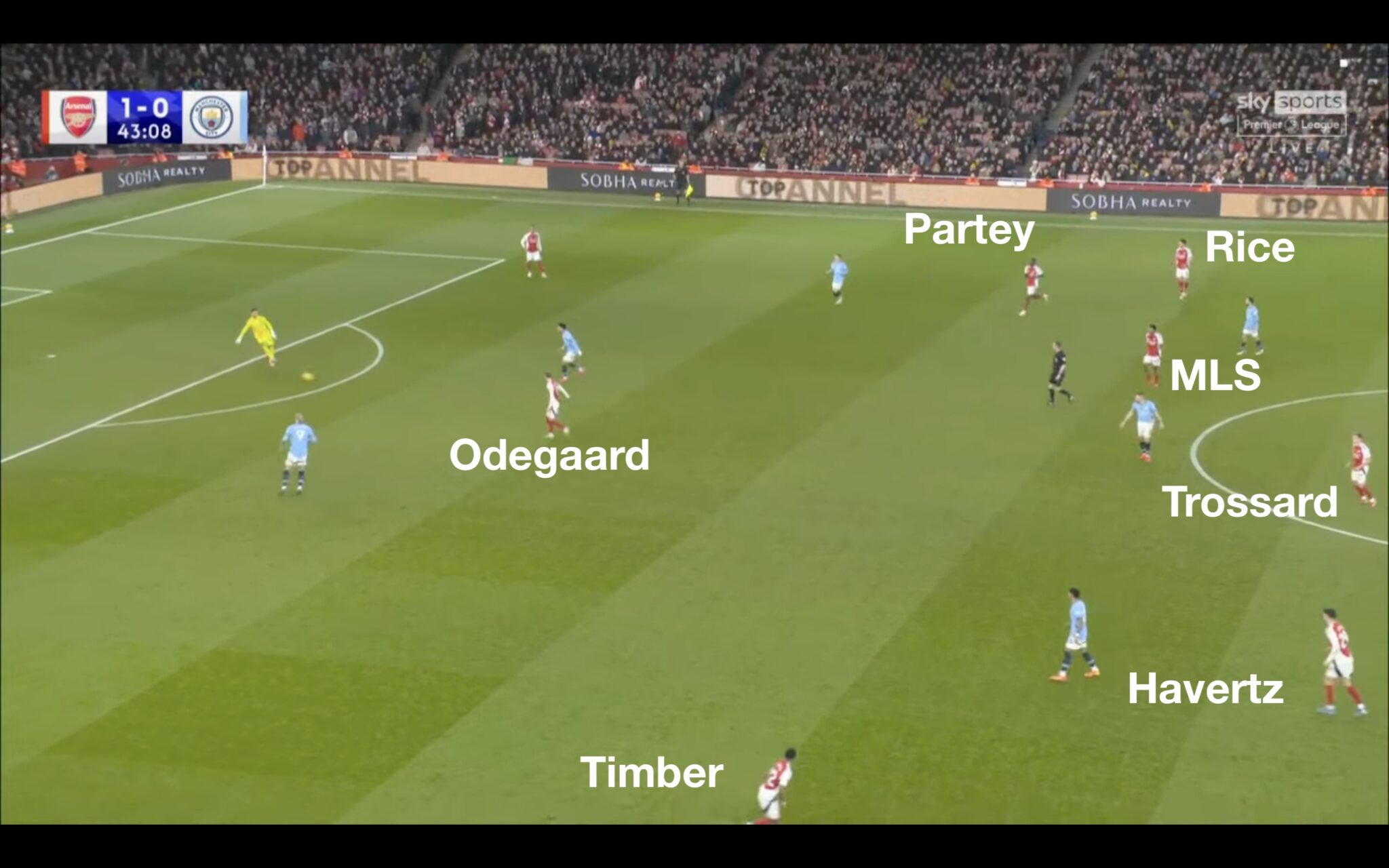 Even in possession further upfield, Odegaard would drop into areas you would usually expect to see Partey or Timber, with the Dutchman staying high and wide to allow Gabriel Martinelli to drift inside.
Even in possession further upfield, Odegaard would drop into areas you would usually expect to see Partey or Timber, with the Dutchman staying high and wide to allow Gabriel Martinelli to drift inside.
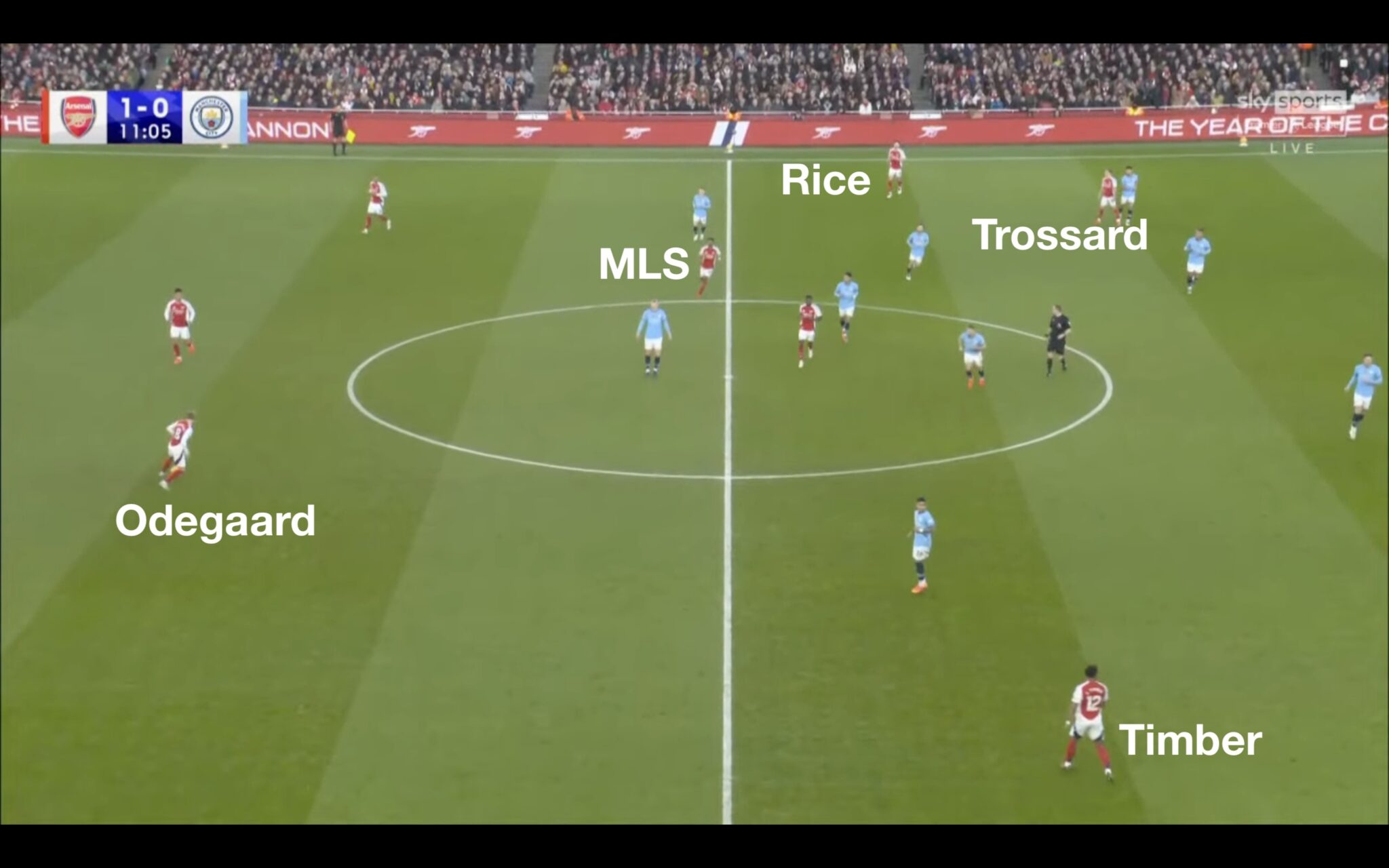 When City did force Arsenal back with the ball were still no real rotations and no real threat out wide. Arsenal happy to allow the switch. City players completed two take-ons — one inside their own box — in the entire match, with John Stones and Josko Gvardiol recording one apiece. Six different Arsenal players completed at least one and the team registered nine in total.
When City did force Arsenal back with the ball were still no real rotations and no real threat out wide. Arsenal happy to allow the switch. City players completed two take-ons — one inside their own box — in the entire match, with John Stones and Josko Gvardiol recording one apiece. Six different Arsenal players completed at least one and the team registered nine in total.
They Not Like Us.
More fluidity would’ve done Guardiola’s side some good: the goal City did score came from Savinho vacating his position and overloading the opposite side of the pitch, finding space between the Arsenal block to receive and cross for Erling Haaland. That probably should’ve settled City but the collapse from there was trying to force the ball through the heart of the pitch. Foden’s awful pass straight into Thomas Partey saw the lead retaken almost immediately.
Much has been said about Arsenal funneling things wide. It has been pointed at as a reason the team sometimes struggles to break opponents down; just a couple weeks ago, Jamie Carragher was on Monday Night Football displaying how unusually averse Arsenal are to attacking through the middle, and the data on Odegaard suggests this aversion is even more stark now than in previous campaigns.
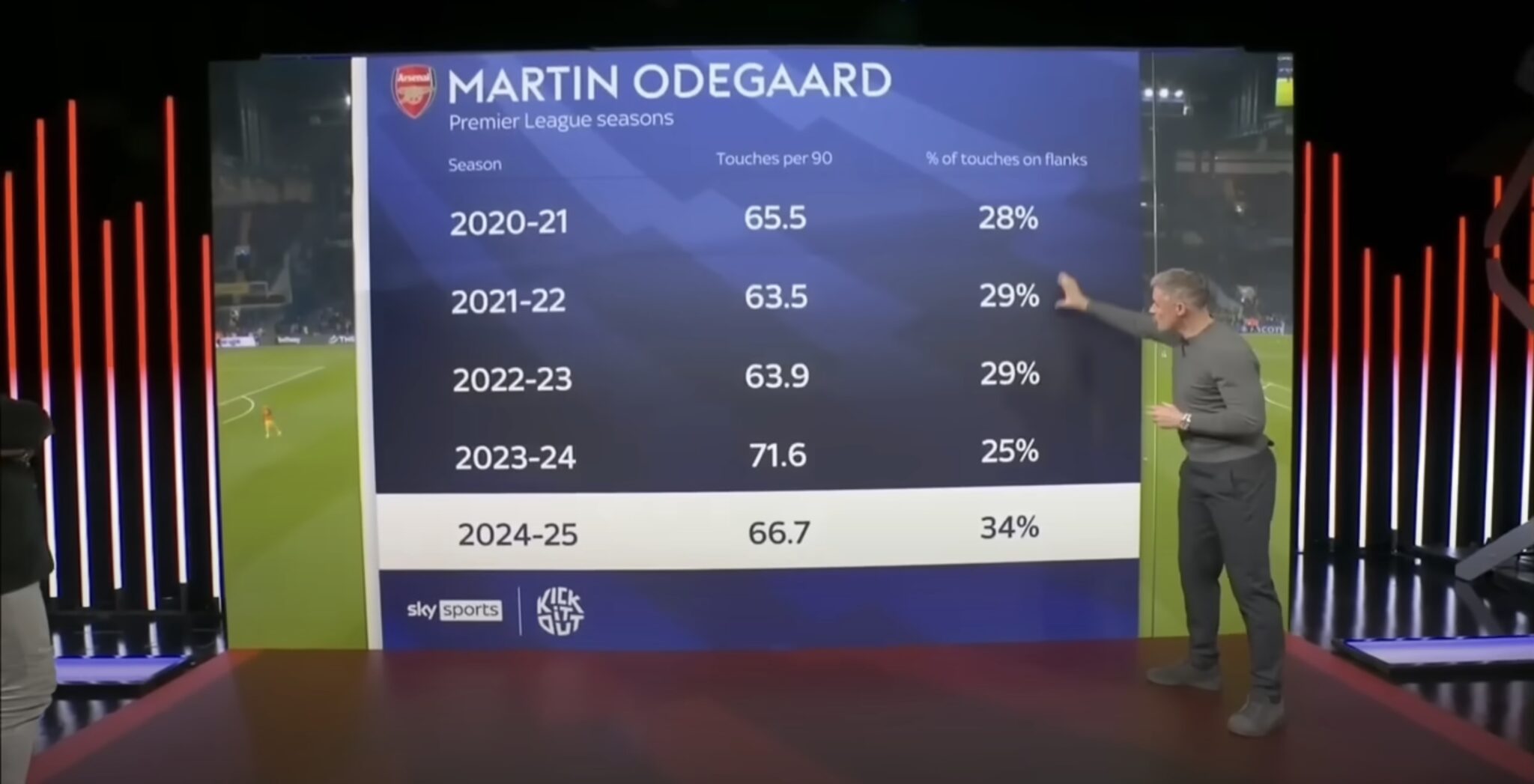 The long-held suspicion is that Mikel Arteta doesn’t want to give the ball away centrally when committing players high upfield because it can lead to incredibly dangerous counter-attacks. Funnily enough, Arsenal probed the middle for the Myles Lewis-Skelly goal that sent everyone wild, with Rice brilliantly wrapping a ball through the lines and into the teenager. Playing through the centre without taking too many risks is a matter of how and a matter of when. In that situation, Lewis-Skelly was in enough space to turn comfortably and Rice made sure he really rattled the ball into feet so there was no time to close down the Hale End graduate.
The long-held suspicion is that Mikel Arteta doesn’t want to give the ball away centrally when committing players high upfield because it can lead to incredibly dangerous counter-attacks. Funnily enough, Arsenal probed the middle for the Myles Lewis-Skelly goal that sent everyone wild, with Rice brilliantly wrapping a ball through the lines and into the teenager. Playing through the centre without taking too many risks is a matter of how and a matter of when. In that situation, Lewis-Skelly was in enough space to turn comfortably and Rice made sure he really rattled the ball into feet so there was no time to close down the Hale End graduate.
If a fear of being hit on the break is why Arteta is reluctant to see his Arsenal play badly(!) through the middle, Manchester City proved his point as the game got away from them. Lacking movement and ideas, searching for inspiration, Mateo Kovacic was the first to try to drive at the heart of the Arsenal defence. The space wasn’t there though and the Croatian had Kai Havertz making ground on him, the German pulled off a perfect tackle.
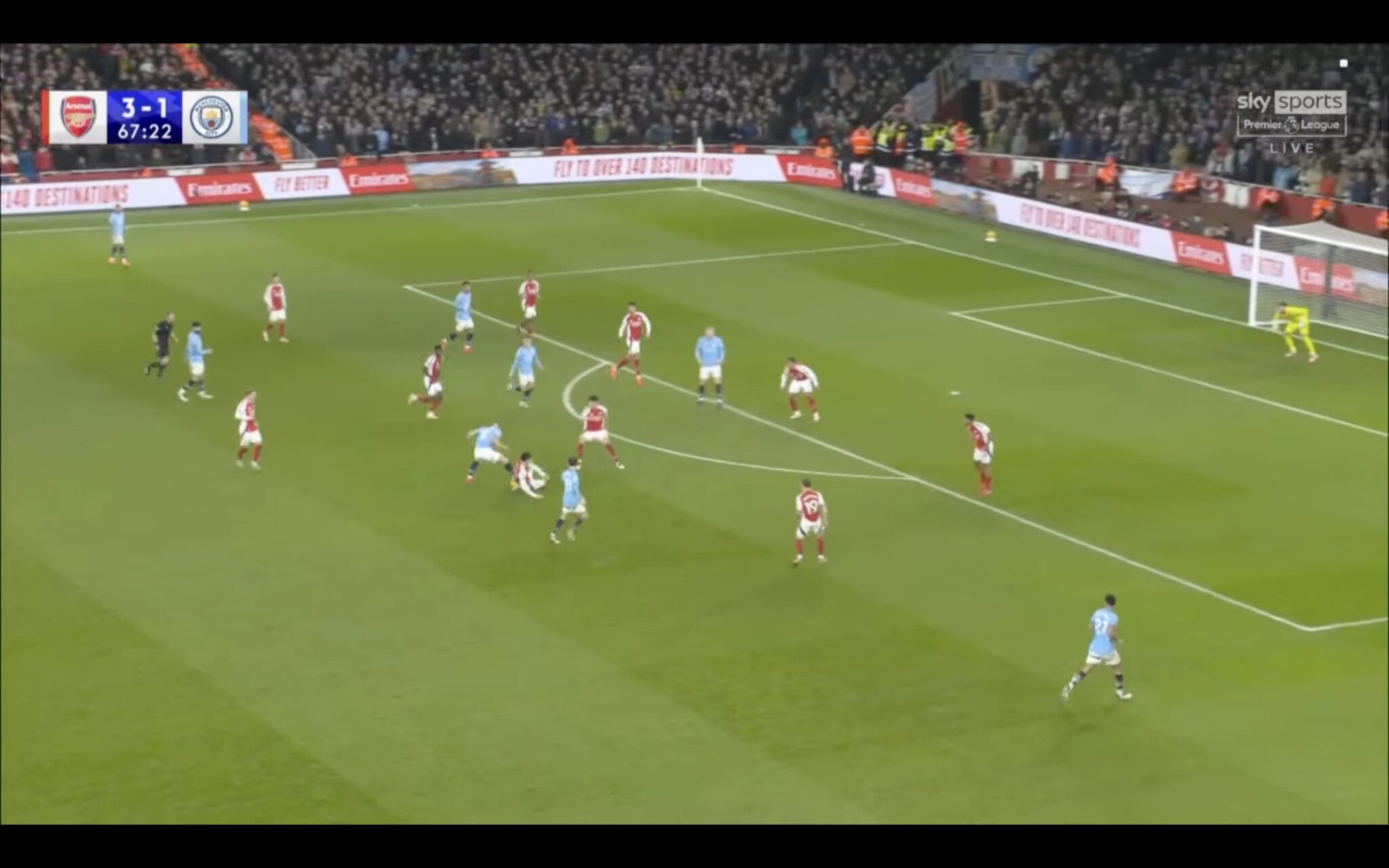 City’s deepest midfielder was completely out of the question and Rice could pick the ball up and drive through the heart of the pitch. This is part of the reason Arsenal attack wide so often — at least if you lose the ball, the opposition is trapped by the touchline, not running through the centre of the park with options to go in any direction.
City’s deepest midfielder was completely out of the question and Rice could pick the ball up and drive through the heart of the pitch. This is part of the reason Arsenal attack wide so often — at least if you lose the ball, the opposition is trapped by the touchline, not running through the centre of the park with options to go in any direction.
Here, Arsenal could break right through the centre of the pitch and did so in numbers.
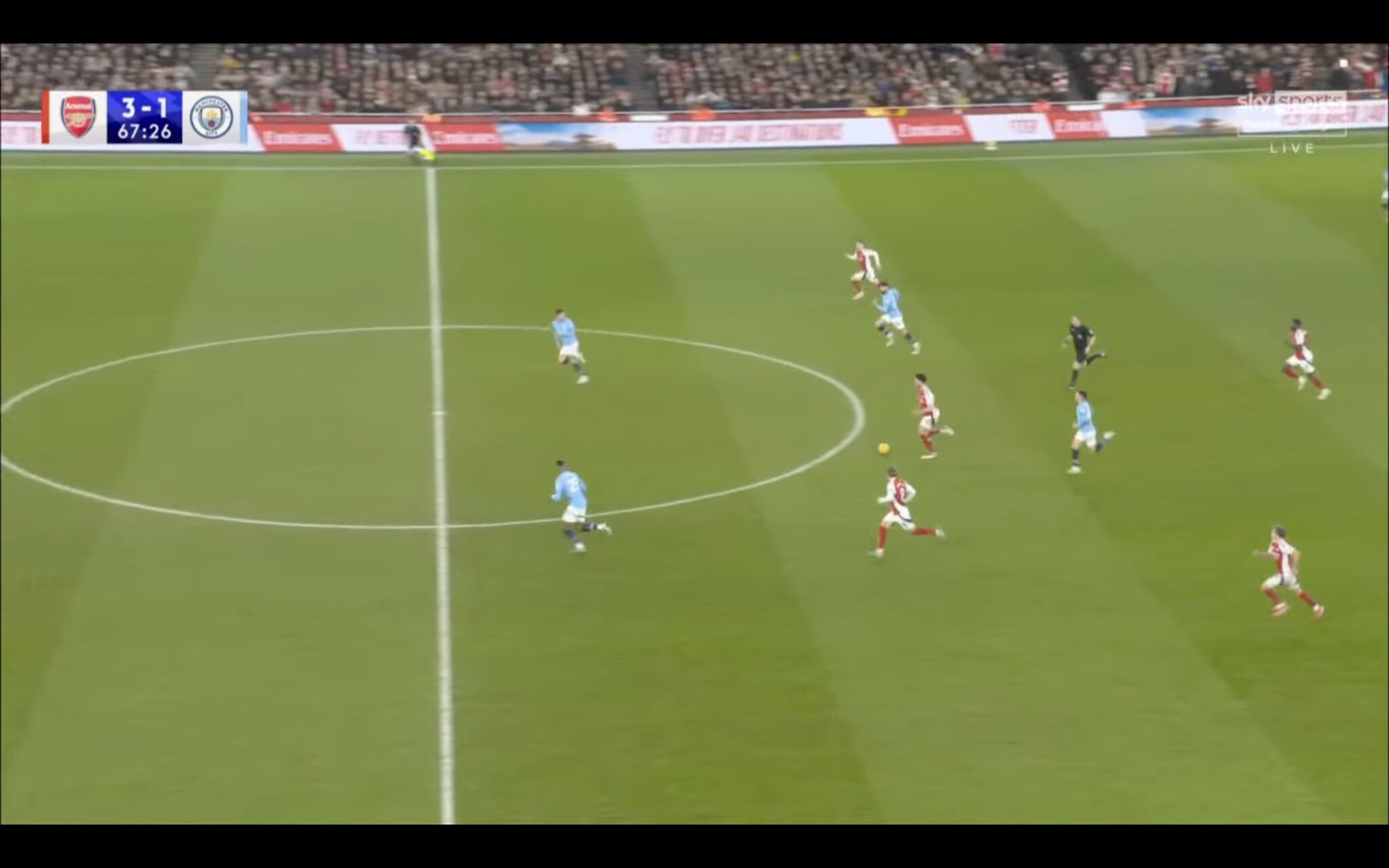 Rice perfectly timed and weighted his pass to Gabriel Martinellli on the right and the Brazilian ran on to force a good save from Ortega.
Rice perfectly timed and weighted his pass to Gabriel Martinellli on the right and the Brazilian ran on to force a good save from Ortega.
The warning was not heeded by City, who continued to force play through a packed middle. Not 10 minutes later a pass was drilled into Savinho, who looked to turn away from Rice and Gabriel but saw a loose touch snatched up by his fellow Brazilian, who immediately played the ball into Thomas Partey. The Arsenal midfielder had no real counter-pressure from behind and Kevin De Bruyne, a good 10 yards away, panicked and raced in.
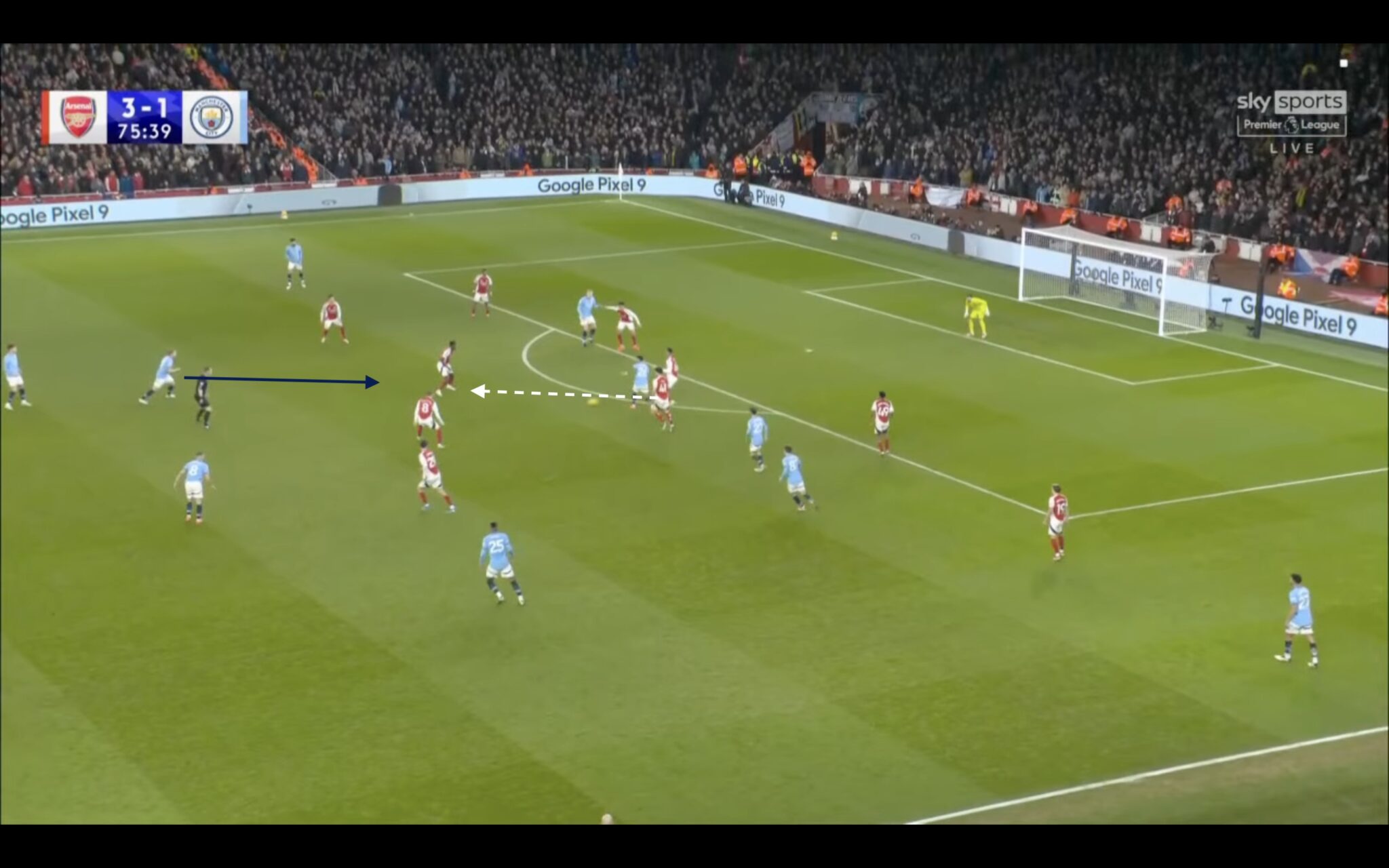 The distance De Bruyne’s 33-year-old legs had to cover was far too great and he left his team-mates exposed as Partey comfortably shifted the ball out of his feet and played a pass beyond the Belgian into Gabriel Martinelli.
The distance De Bruyne’s 33-year-old legs had to cover was far too great and he left his team-mates exposed as Partey comfortably shifted the ball out of his feet and played a pass beyond the Belgian into Gabriel Martinelli.
Looks pretty familiar, doesn’t it?
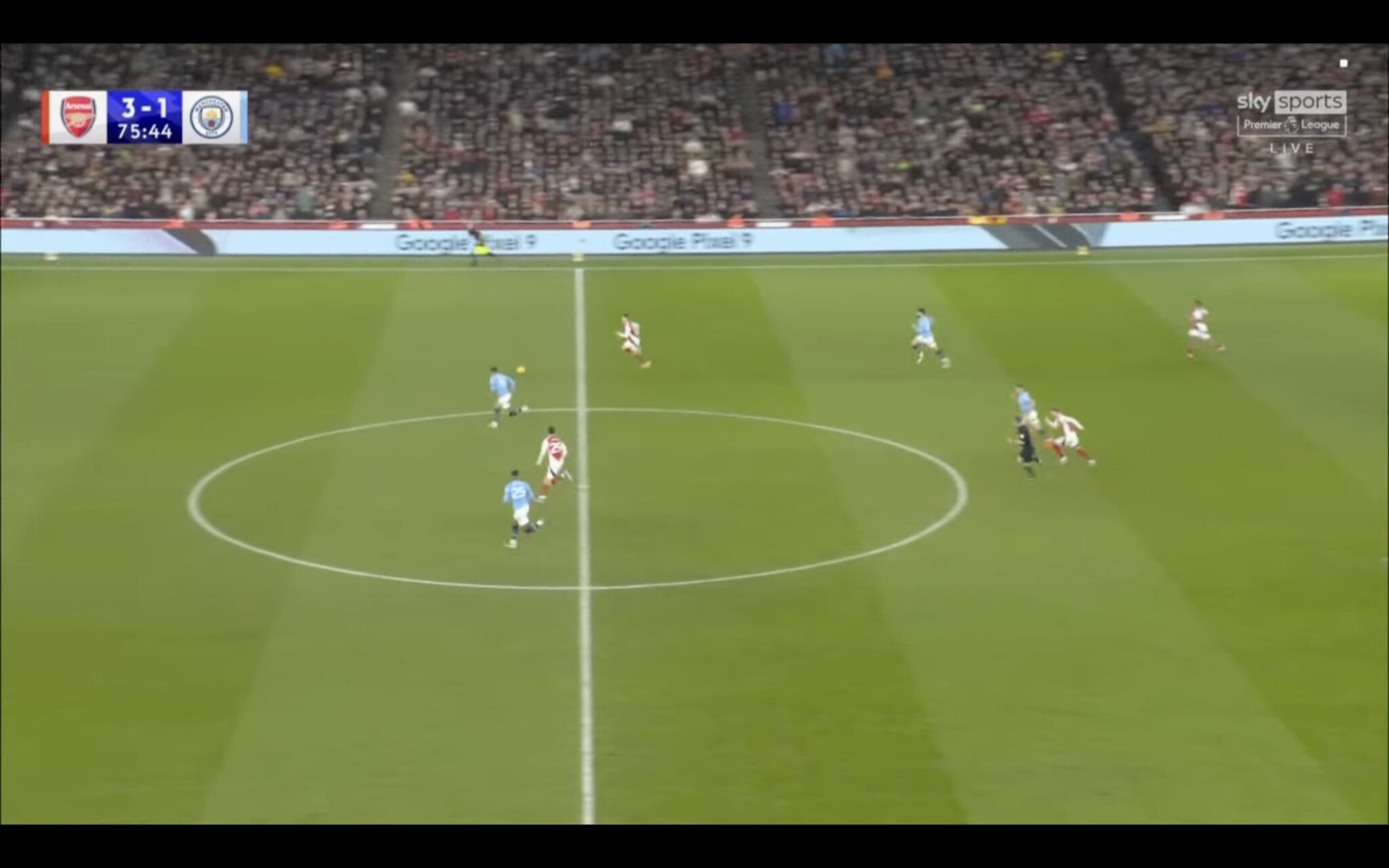 This time around the finishing touch was applied by Havertz and any lingering concerns that Arsenal would not take all three points were washed away. At that point you’d have forgiven Man City fans for turning the TV off before even having the opportunity to see Ethan Nwaneri’s left stroke go viral and put the icing on the cake.
This time around the finishing touch was applied by Havertz and any lingering concerns that Arsenal would not take all three points were washed away. At that point you’d have forgiven Man City fans for turning the TV off before even having the opportunity to see Ethan Nwaneri’s left stroke go viral and put the icing on the cake.
After 12 league defeats in a row against City, Arsenal have shown Guardiola to be a Mortal Man after all. It’s now four unbeaten in the Premier League for Arsenal when the sides have met — a corner had already been turned before the weekend — but the manner of this confident, dominant, and above all cathartic performance felt like something different altogether, it felt like the end of something and like proof that something else has begun.
DAMN, indeed.

